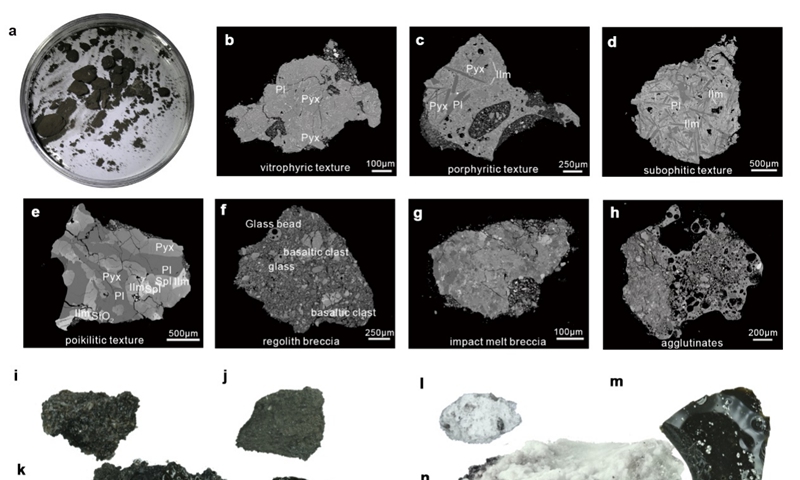
Photo: CCTV
A joint research team consisting of several Chinese institutions on Tuesday published the very first research paper on the nature of lunar samples returned by the Chang'e-6 mission in the journal National Science Review.
The paper not only filled a historical gap in the study of the Moon's far side, but also provided direct evidence for researching its early evolution.
The paper, led by China's leading research institutions, including the National Astronomical Observatories of the Chinese Academy of Sciences and the National Space Administration Lunar Exploration and Aerospace Engineering Center, discussed the physical, mineralogical and geochemical characteristics of the returned samples.
Historically, a total of over 380 kilograms of lunar samples have been retrieved through six US Apollo missions, three Luna missions by former Soviet Union and one Chang'e-5 mission by China, all of which were collected from the Moon's near side.
The Chang'e-6 mission, however, marks the first time humanity has ever successfully collected samples from the Moon's far side, returning 1,935.3 grams of precious material.
The landing site for this sampling mission was located in the South Pole-Aitken basin on the far side, specifically at the edge of the Apollo impact crater, an area where the lunar crust is extremely thin, potentially revealing primordial materials from the early impact basins. Particle analysis shows a bimodal distribution of grain sizes, indicating that the samples may have undergone mixing from different sources.
The study indicates that the Chang'e-6 samples contain not only basalt that records the history of volcanic activity on the Moon, but also non-basaltic materials from other regions.
These samples serve as important "messengers" from the Moon's ancient past, providing crucial firsthand data for studying the early impact history of the Moon, volcanic activity on the far side and the composition of the Moon's interior. The study also offers new insights into the geological differences between the Moon's far side and its near side.
Global Times




